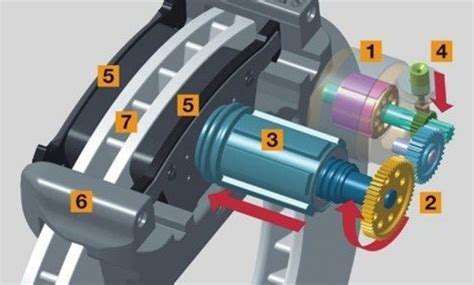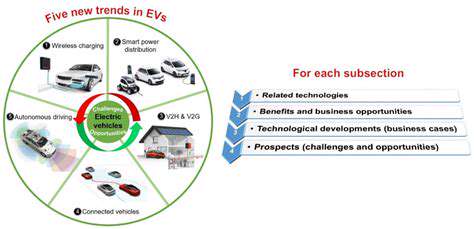What is an Electronic Parking Brake (EPB) with Auto Hold?

Understanding the Basics
An electronic parking brake, often abbreviated as EPB, is a sophisticated system that replaces the traditional mechanical parking brake found in many vehicles. Instead of a physical lever or pedal, EPB utilizes a computer-controlled hydraulic or electric mechanism to engage and disengage the parking brake. This system offers several advantages over the older design, making it a common feature in modern vehicles.
Electronic parking brakes are integrated into the vehicle's overall braking system, often communicating with the anti-lock braking system (ABS) and traction control. This integration allows for a more seamless and responsive braking experience, especially during emergency situations.
How EPB Works
The functionality of an electronic parking brake hinges on the computer's ability to control the braking components. Sensors monitor vehicle position and driver input, enabling the system to automatically apply or release the parking brake as needed. This often involves a combination of hydraulic pressure or electric motors, depending on the specific implementation.
Precise control over braking force is crucial, and EPB systems are designed to provide consistent and reliable performance. This is vital for maintaining vehicle stability, especially when parked on inclines or declines.
Advantages of EPB
Electronic parking brakes offer a range of benefits that enhance driver experience and safety. One key advantage is improved safety, thanks to the system's ability to automatically engage and disengage the parking brake in specific situations, reducing the risk of accidents. Furthermore, many modern EPB systems offer features like automatic brake release when the vehicle is shifted into drive or reverse, enhancing driver convenience.
Enhanced driver convenience and reduced maintenance are also notable advantages. The lack of a physical lever or pedal simplifies the vehicle's interior design, and the electronic nature of the system generally leads to lower maintenance requirements than a traditional mechanical parking brake.
Potential Issues and Troubleshooting
While electronic parking brakes are generally reliable, potential issues can arise. These can range from minor issues like a faulty sensor to more complex problems requiring professional diagnosis. Understanding the specific warning signs or error codes associated with the EPB system in your vehicle is crucial for effective troubleshooting.
If you experience unusual behavior with your EPB, such as difficulty engaging or disengaging, or persistent warning lights, it's essential to seek professional assistance from a qualified mechanic. Ignoring these issues could lead to more significant problems down the road.
EPB and Vehicle Safety
The integration of electronic parking brakes into the overall vehicle safety system is a significant advancement in automotive technology. This advanced technology provides a more sophisticated approach to vehicle stability and safety, particularly in challenging driving conditions. Modern EPB systems often include features like automatic brake release and enhanced stability control, which contribute to a safer driving experience.
The consistent braking force provided by EPB is crucial for maintaining vehicle stability, especially on slopes or uneven terrain. This feature contributes to a safer and more predictable driving experience.
How Does the Auto Hold Function Work?
Understanding the Electronic Braking System
The auto-hold function, a common feature in modern vehicles, leverages the electronic parking brake system (EPB) to maintain a stationary position. This system, often integrated with the anti-lock braking system (ABS) and traction control, provides a sophisticated approach to holding the vehicle in place, particularly on inclines and declines. Unlike traditional parking brakes, the EPB uses electronic actuators and sensors for a more precise and controlled braking action.
These sensors constantly monitor vehicle position and detect any movement tendencies. This real-time monitoring allows the system to automatically engage the brakes as needed, preventing the car from rolling. The EPB is crucial in the operation of auto-hold, allowing for a smooth and reliable experience when stopping and holding the vehicle.
The Role of Sensors in Auto-Hold
A network of sensors plays a critical role in the auto-hold function. These sensors detect various parameters, including the position of the vehicle, the angle of the incline or decline, and any changes in speed or acceleration. This continuous monitoring ensures that the braking force is precisely adjusted to maintain the vehicle's position without any unintended movement.
How Auto-Hold Maintains Vehicle Stability
The auto-hold function precisely manages the braking force to counteract the force of gravity. This is especially crucial on hills, where the vehicle tends to roll. By automatically adjusting the brake pressure, the system maintains the vehicle's stability, preventing unwanted movement and ensuring a secure stop.
The Activation Process
Activating the auto-hold function typically involves pressing a button or using a control on the dashboard. This initiates the system, enabling the electronic parking brake to engage and maintain the vehicle's position.
Disengaging the Auto-Hold Feature
Disengaging the auto-hold function is usually achieved by gently pressing the accelerator pedal. This action releases the braking pressure, allowing the vehicle to move freely. The process is designed to be intuitive and user-friendly, ensuring a smooth transition from a stationary to a moving state.
Troubleshooting Potential Issues
Occasionally, issues can arise with the auto-hold function. If the system fails to engage or disengage properly, it might indicate a problem with the sensors, the electronic control unit (ECU), or the parking brake system itself. Consulting a qualified mechanic can help diagnose and resolve such problems, ensuring the smooth and reliable operation of the auto-hold function.
Understanding the Limitations
While the auto-hold function provides a convenient way to maintain a stationary position, it's not a foolproof solution. Factors like extreme slopes, heavy loads, or certain road conditions might still require the use of the traditional parking brake. Understanding the limitations of the auto-hold function is essential for responsible and safe driving practices.











